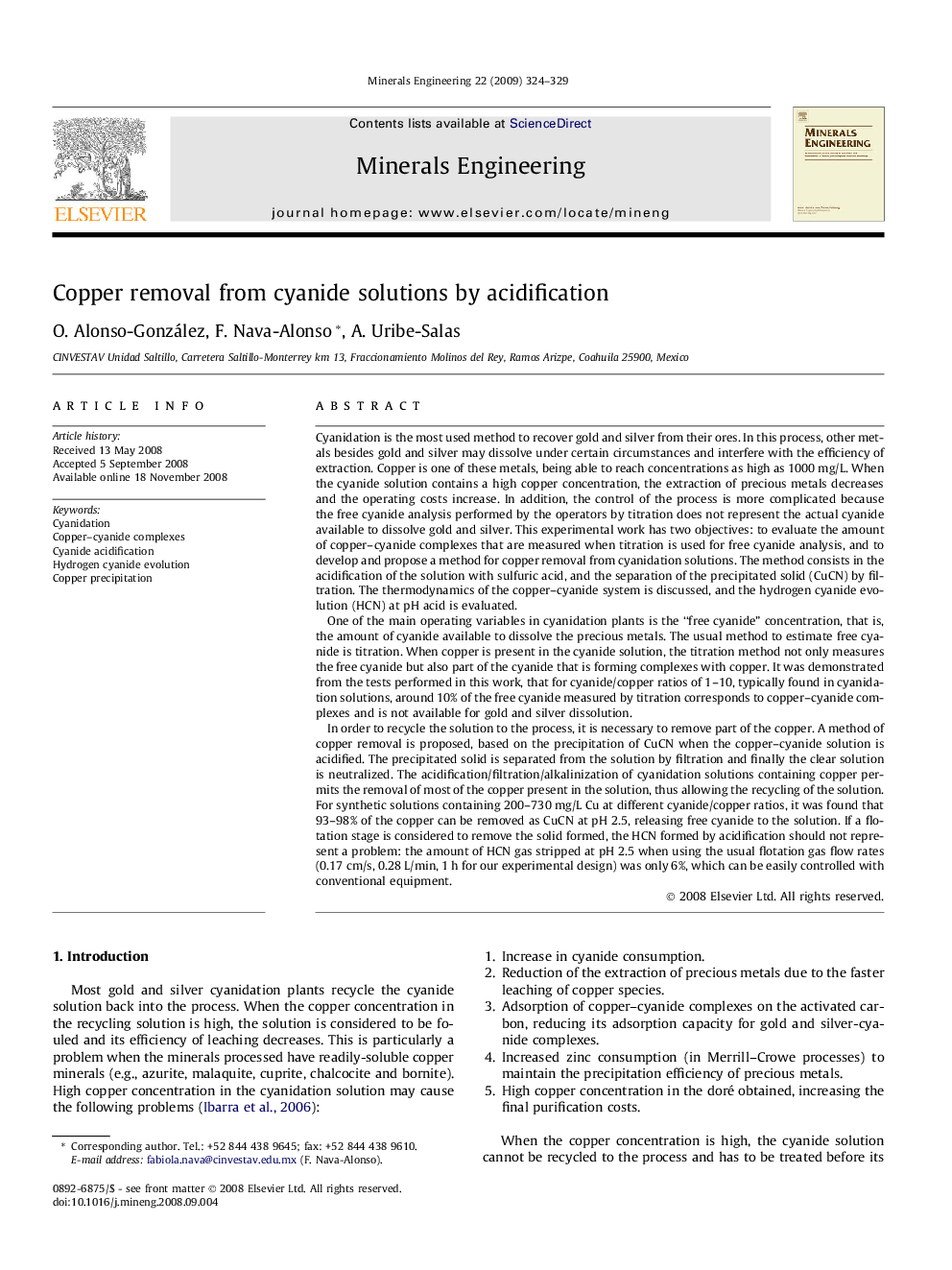| کد مقاله | کد نشریه | سال انتشار | مقاله انگلیسی | نسخه تمام متن |
|---|---|---|---|---|
| 234403 | 465408 | 2009 | 6 صفحه PDF | دانلود رایگان |

Cyanidation is the most used method to recover gold and silver from their ores. In this process, other metals besides gold and silver may dissolve under certain circumstances and interfere with the efficiency of extraction. Copper is one of these metals, being able to reach concentrations as high as 1000 mg/L. When the cyanide solution contains a high copper concentration, the extraction of precious metals decreases and the operating costs increase. In addition, the control of the process is more complicated because the free cyanide analysis performed by the operators by titration does not represent the actual cyanide available to dissolve gold and silver. This experimental work has two objectives: to evaluate the amount of copper–cyanide complexes that are measured when titration is used for free cyanide analysis, and to develop and propose a method for copper removal from cyanidation solutions. The method consists in the acidification of the solution with sulfuric acid, and the separation of the precipitated solid (CuCN) by filtration. The thermodynamics of the copper–cyanide system is discussed, and the hydrogen cyanide evolution (HCN) at pH acid is evaluated.One of the main operating variables in cyanidation plants is the “free cyanide” concentration, that is, the amount of cyanide available to dissolve the precious metals. The usual method to estimate free cyanide is titration. When copper is present in the cyanide solution, the titration method not only measures the free cyanide but also part of the cyanide that is forming complexes with copper. It was demonstrated from the tests performed in this work, that for cyanide/copper ratios of 1–10, typically found in cyanidation solutions, around 10% of the free cyanide measured by titration corresponds to copper–cyanide complexes and is not available for gold and silver dissolution.In order to recycle the solution to the process, it is necessary to remove part of the copper. A method of copper removal is proposed, based on the precipitation of CuCN when the copper–cyanide solution is acidified. The precipitated solid is separated from the solution by filtration and finally the clear solution is neutralized. The acidification/filtration/alkalinization of cyanidation solutions containing copper permits the removal of most of the copper present in the solution, thus allowing the recycling of the solution. For synthetic solutions containing 200–730 mg/L Cu at different cyanide/copper ratios, it was found that 93–98% of the copper can be removed as CuCN at pH 2.5, releasing free cyanide to the solution. If a flotation stage is considered to remove the solid formed, the HCN formed by acidification should not represent a problem: the amount of HCN gas stripped at pH 2.5 when using the usual flotation gas flow rates (0.17 cm/s, 0.28 L/min, 1 h for our experimental design) was only 6%, which can be easily controlled with conventional equipment.
Journal: Minerals Engineering - Volume 22, Issue 4, March 2009, Pages 324–329